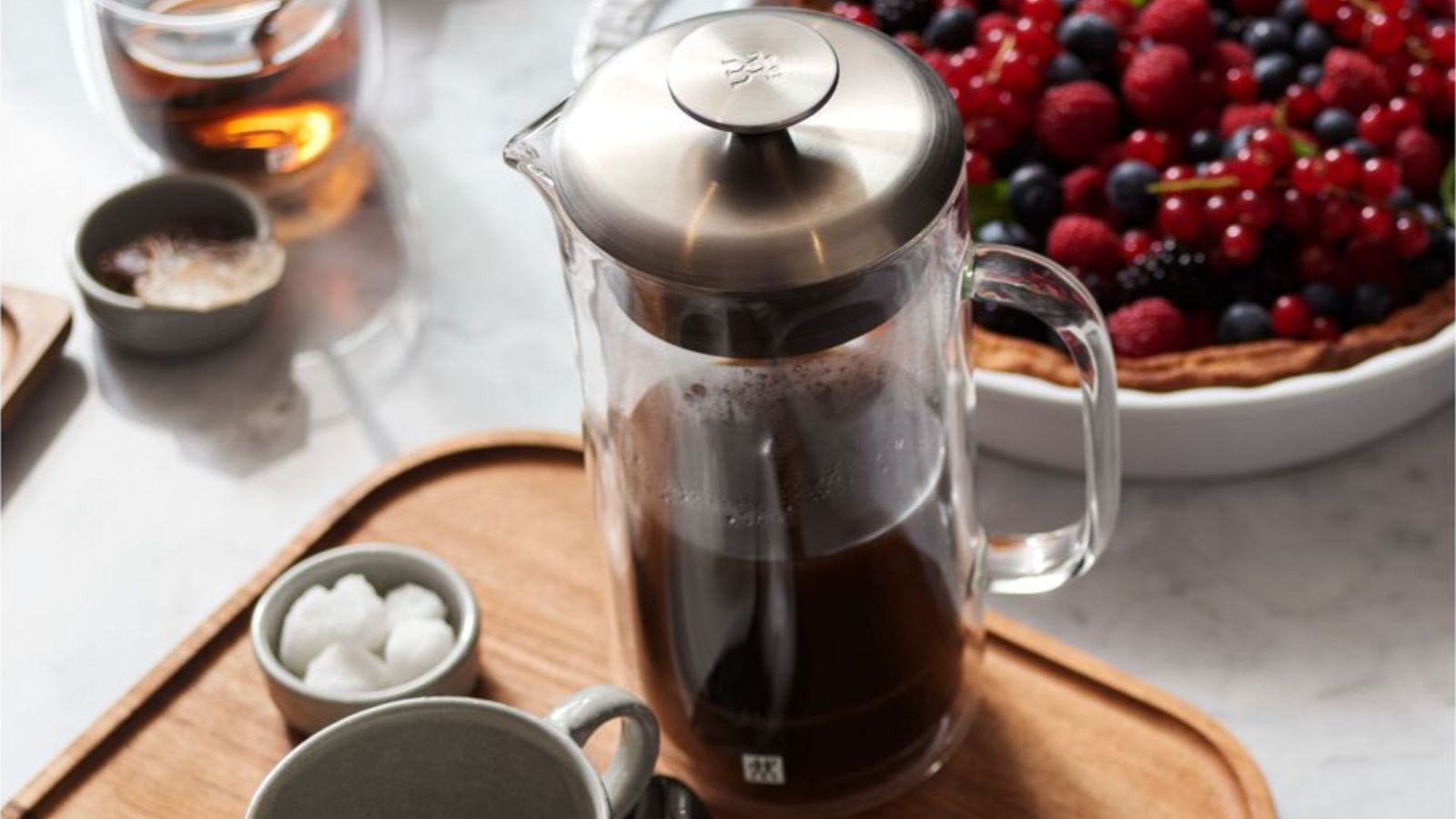
Zwilling, whilst new to the French press coffee maker scene, has actually been around for decades. The German giant is best known for their quality kitchenware, but now, they've turned their hand to coffee.
If you already know Zwilling, you'll recognise their signature sleek design and unparalleled technical skills in this French press. I've heard lots of good things about their French press and now I can confirm that it lives up to its reputation.
I took Zwilling's French press to our test kitchen to see how it compares to the best French presses. I used it to brew a full carafe of delicious coffee. Whilst I enjoyed every sip, there are some functional quirks which might put you off.
Specifications
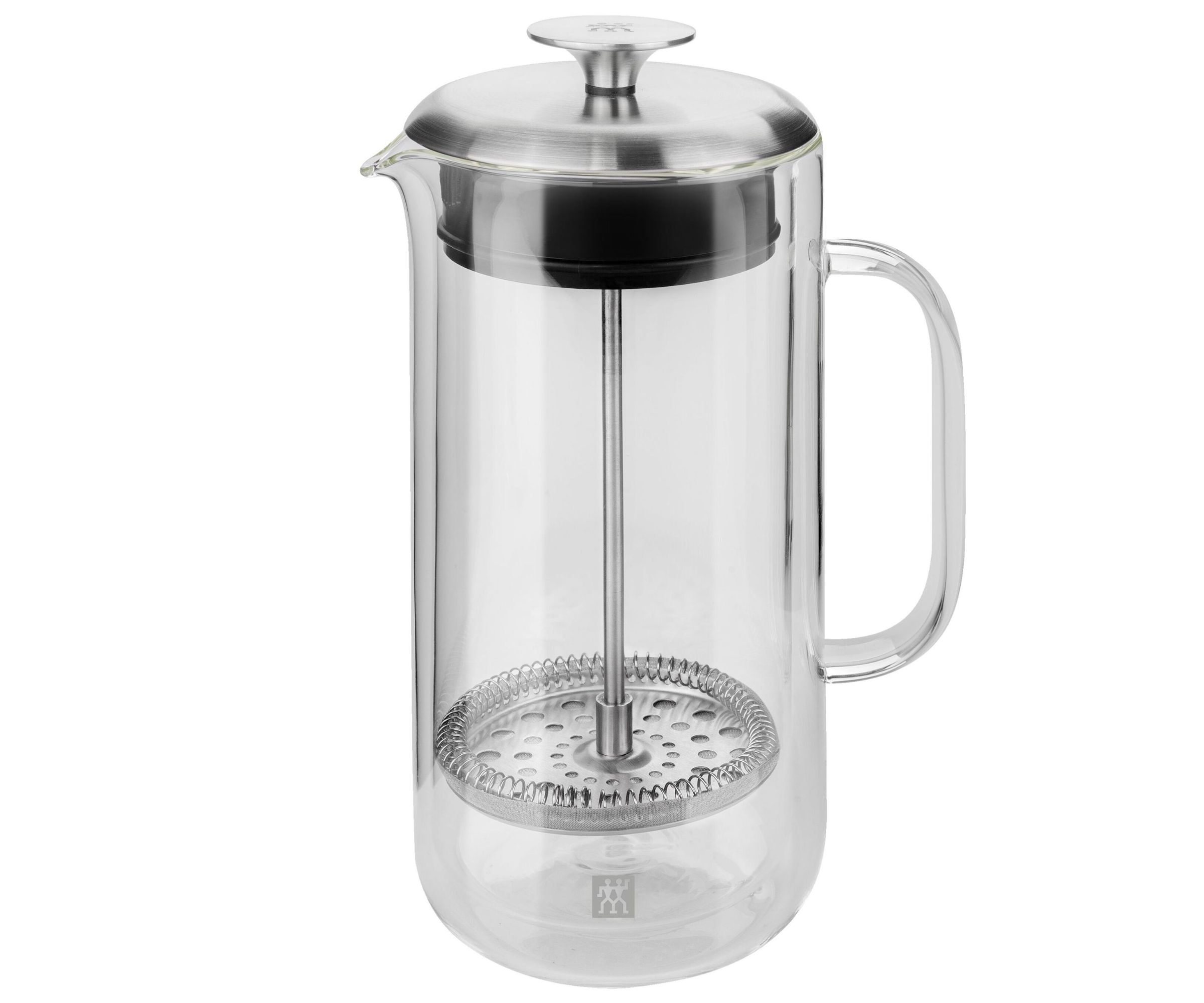
Unboxing
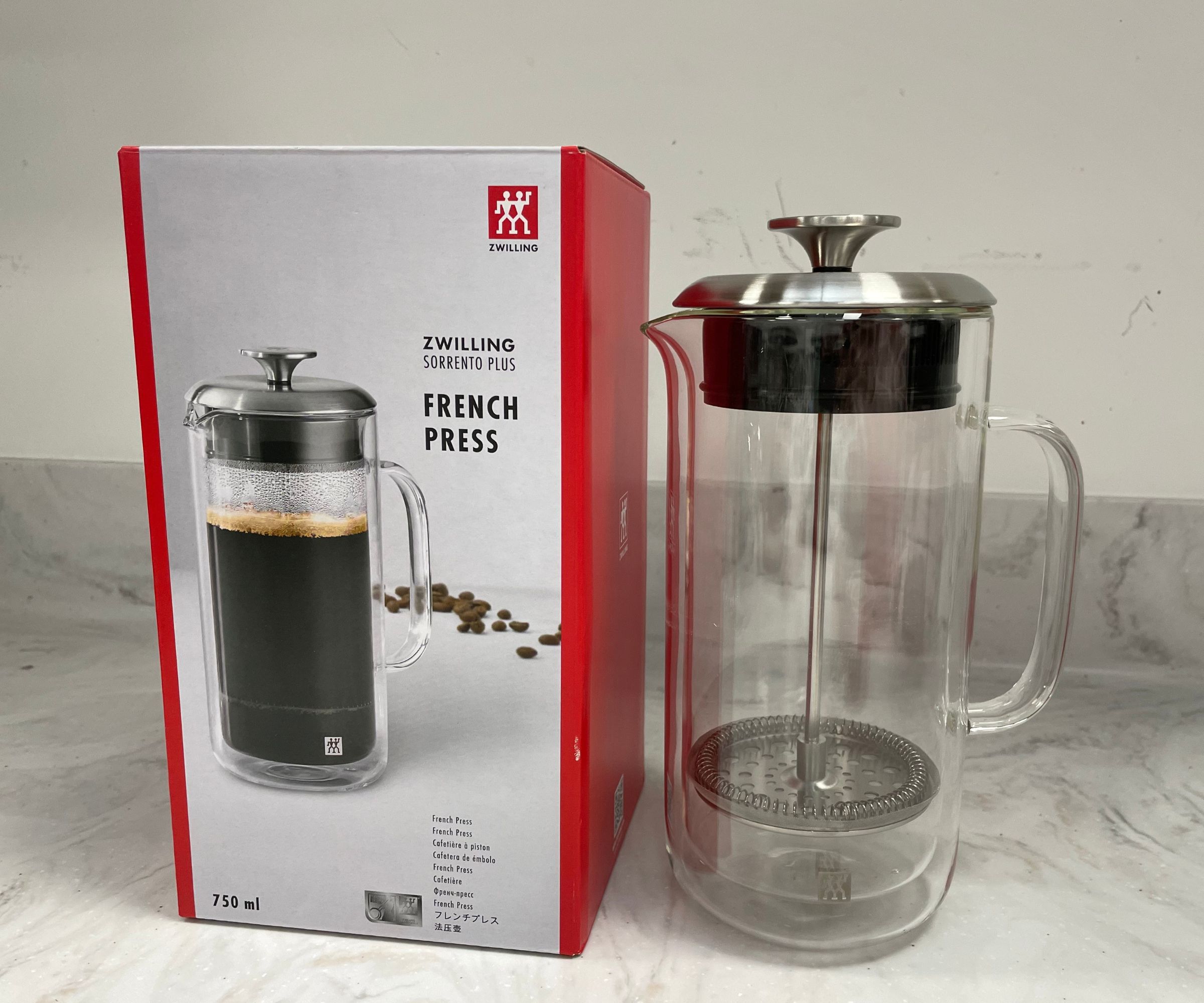
I unboxed the Zwilling next to Stanley and Fellow's French presses. Zwilling had the edge at this stage, because it came in completely recyclable, carboard packaging. This is great from both an environmental and garbage perspective. It's not to be underestimated.
Against the other French presses, this was the smallest. It also balances a number of useful design features: it's transparent, so you can watch your coffee brew; it's double-walled, for keeping your coffee hot; and has fine filters, so you can brew a smooth cup of coffee. It seems like a French press dream come true.
Who would it suit?
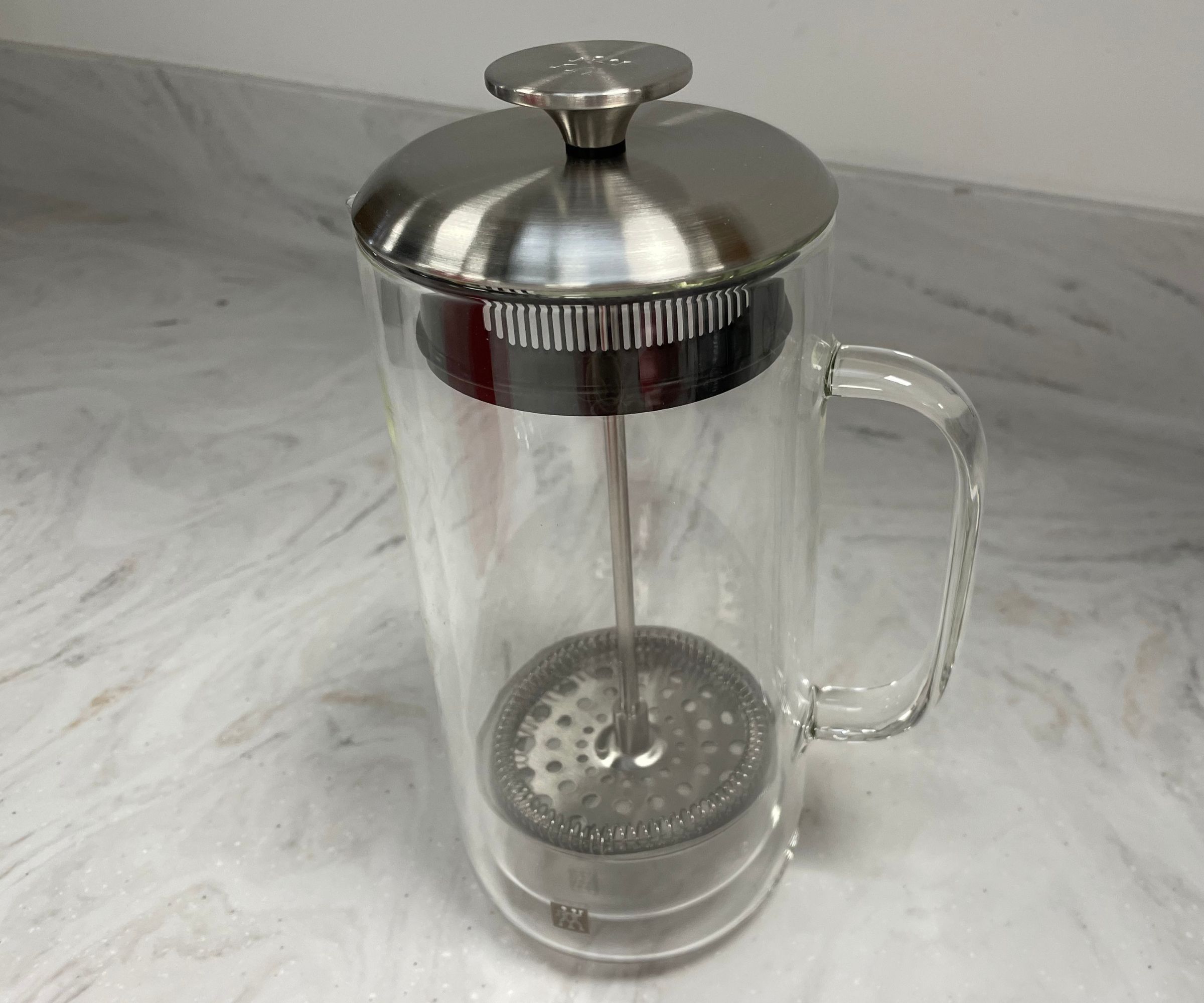
There are plenty of people who want a clear carafe for brewing their coffee in. However, most of the classic designs have very little insulating power and can be quite hot to touch. This ticks boxes for being both clear and a good insulator, so suits those who are seeking a modern spin on classic aesthetics.
Of course, if you're clumsy and think you're likely to drop your French press, this isn't an ideal option (there are plenty of stainless steel French presses, including the Fellow Clara, which is available at Nordstrom and it will better meet your needs). Plus, the double-walling has taken up valuable volume, meaning it delivers on smaller servings rather than brewing a carafe which could fill every cup in your cupboard.
What is it like to use?
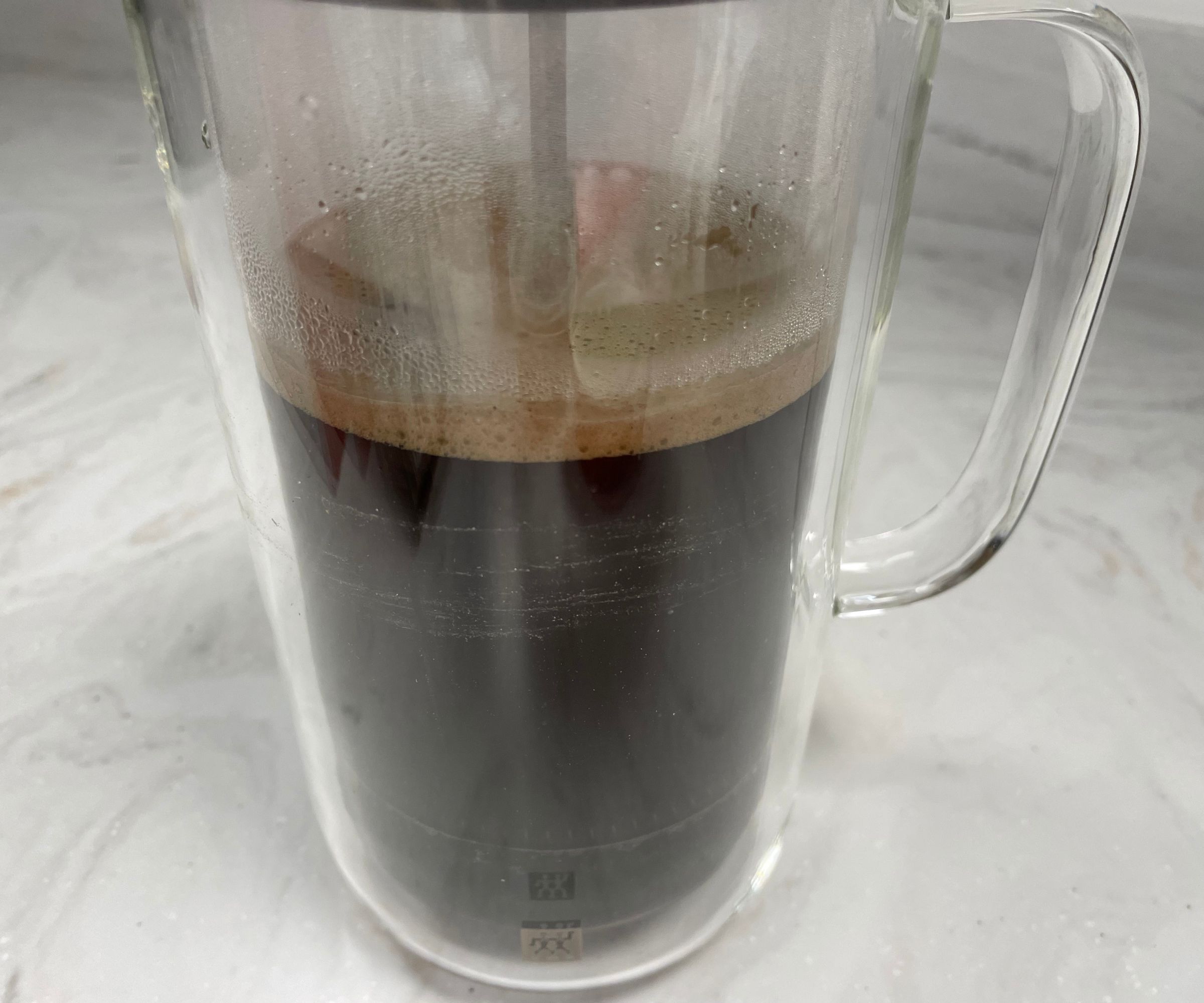
French presses are rarely anything other than simple and the Zwilling is no exception. The stainless steel plunger feels tactile and, whilst the seal is effective, it doesn't give as much resistance as other models.
The Zwilling's capacity is just under 27 oz, which is relatively small. By the time I added my coffee grounds and water (in a 1:12 part ratio), I had 24 oz of coffee. I didn't want much more, because the plunger and filter wouldn't sit neatly in. I would say this is close to the Zwilling's limit. If you'll be making two to three cups of coffee, this is perfect, but that isn't very much.
I left the Zwilling to brew for five minutes, before plunging the filter through the grounds. The coffee was just under 200 degrees Fahrenheit (if you want the details it was 197 degrees), which is a great temperature for French press. I even left some coffee in the carafe to test the double-wall insulation and it worked really well. A full hour later, the coffee was 190 degrees, which is fantastic by the standards of glass carafes.
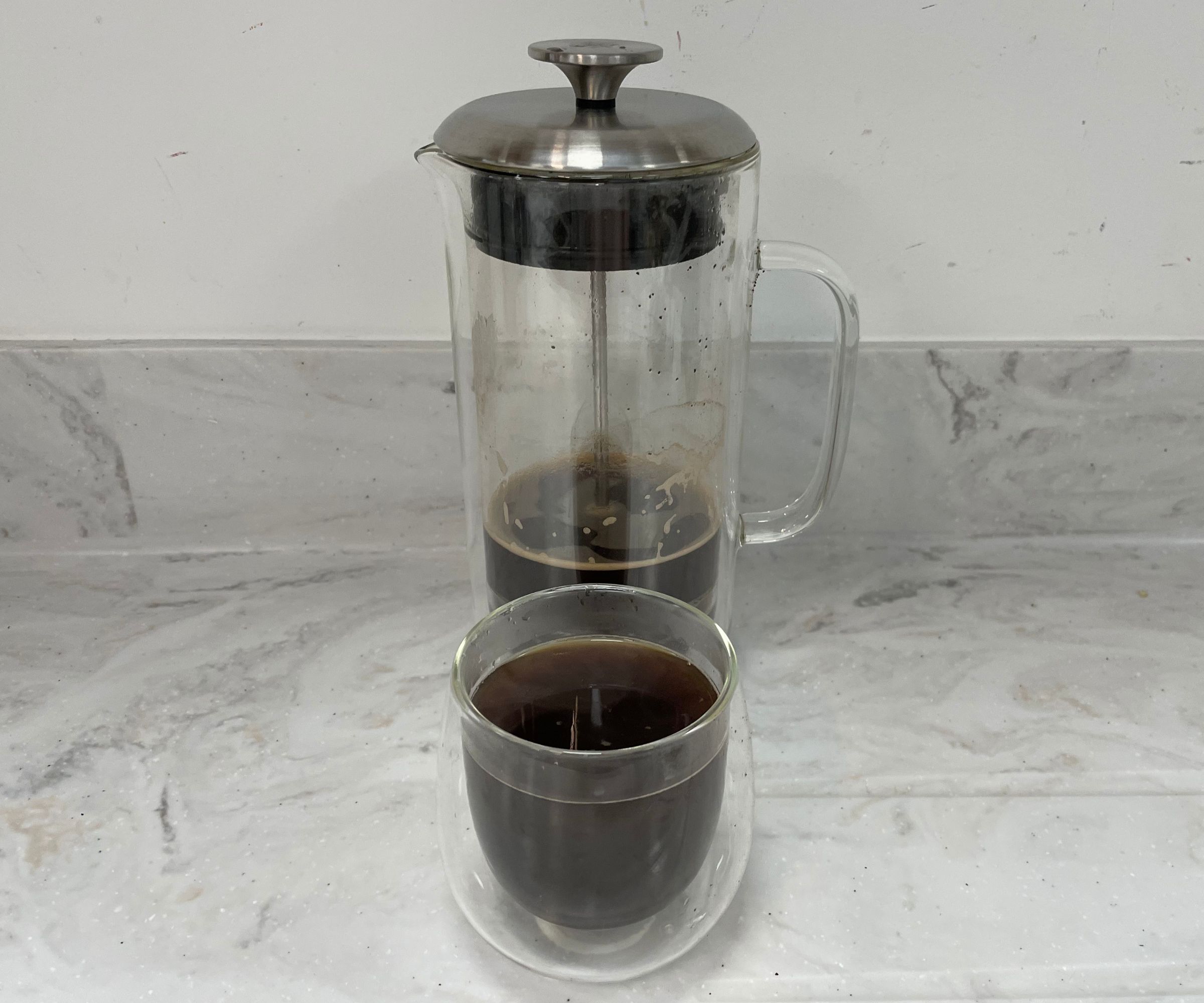
Before I could get to the taste test, I lined up the filter with the spout and poured. The lightweight design made it all very easy. I filled my cup, stopped pouring, and didn't get any dribbling or mess running down the outside of the carafe. Plus, the outside was still cool to touch, so I could use a precautionary hand to support the carafe body whilst pouring.
My cup of coffee was light and delicately brewed. It had all the signature, acidic notes that I would expect from my French press coffee and the brew tasted smooth and consistent. Pouring my second cup, I could see a drop of coffee working its way from the spout to the base of my French press. I had read reviews that pouring is a problem for the Zwilling, so I put it down to this. When I made a second carafe, I had even more trouble pouring. At first, I thought the problem was me, but I got some other experts to test the Zwilling and they found the same. It dribbles down the carafe, so a significant amount misses the cup. If you don't pour with confidence, you lose a lot of coffee.
Cleaning, storage, and maintenance
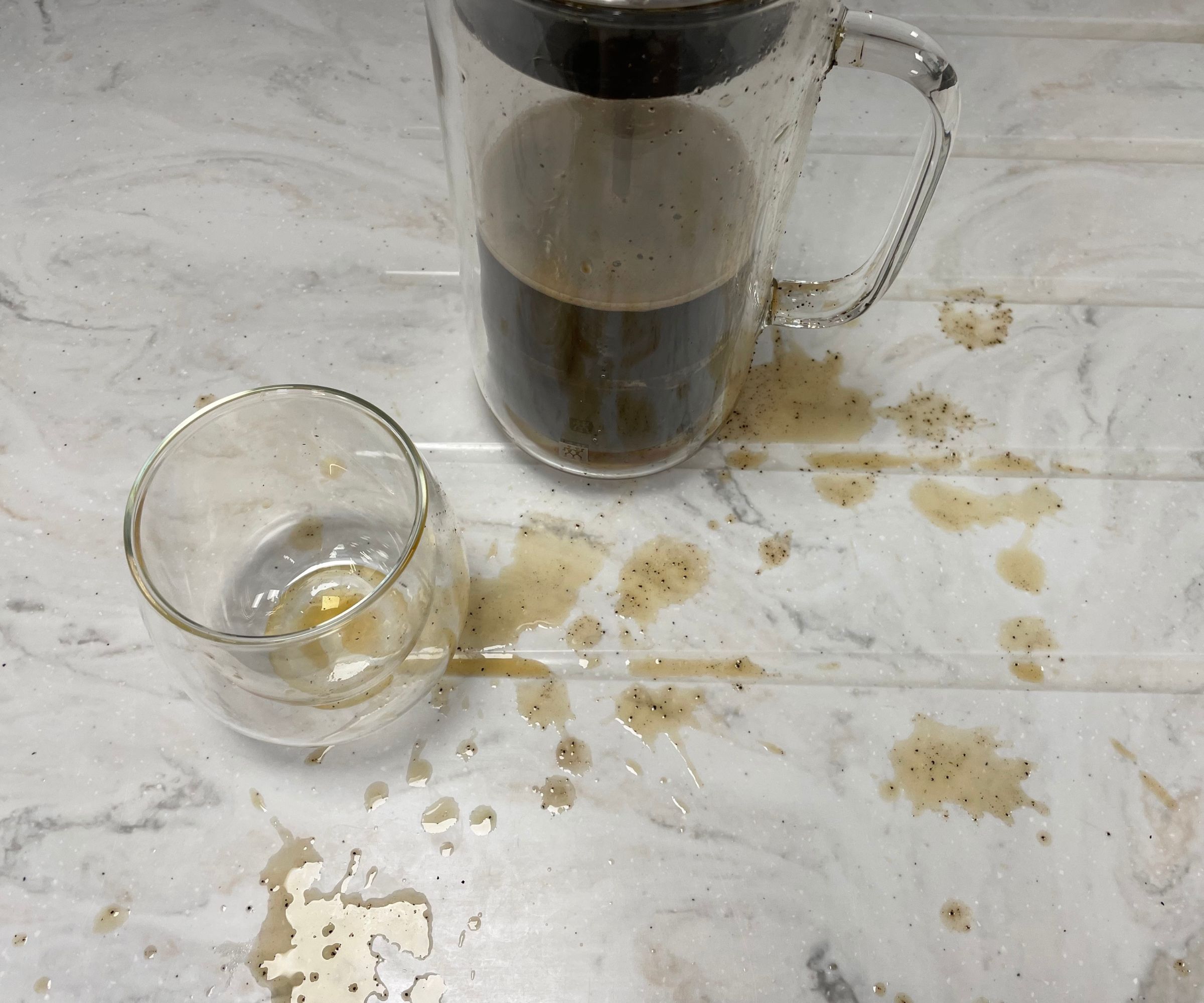
The whole carafe and filter is dishwasher safe and each part is easy to disassemble, which makes for a really easy clean-up. The brushed stainless steel plunger doesn't get smears or fingerprint marks on very easily, so it's all low maintenance.
The only things to note are that all the perks of a borosilicate glass carafe become cons when you're doing a clean-up. Glass shows dust, sediment and smears almost instantly. I'd recommend adding a microfiber cloth (such as this one from Walmart) to your coffee nook to make sure that your French press stays sparkling clean. Plus, if you're not careful pouring, you'll have extra clean-up from where your coffee dribbles down the carafe.
Storage-wise, this is both small and sleek. If you choose to keep it on display, you won't regret it. The Zwilling is compact and attractive, so, at the very worst, people won't notice it. I'd bet they'll compliment you on it though. If you do choose to store it away in drawers and cupboards, this is low enough to sit neatly under shelves.
How does it rate online?
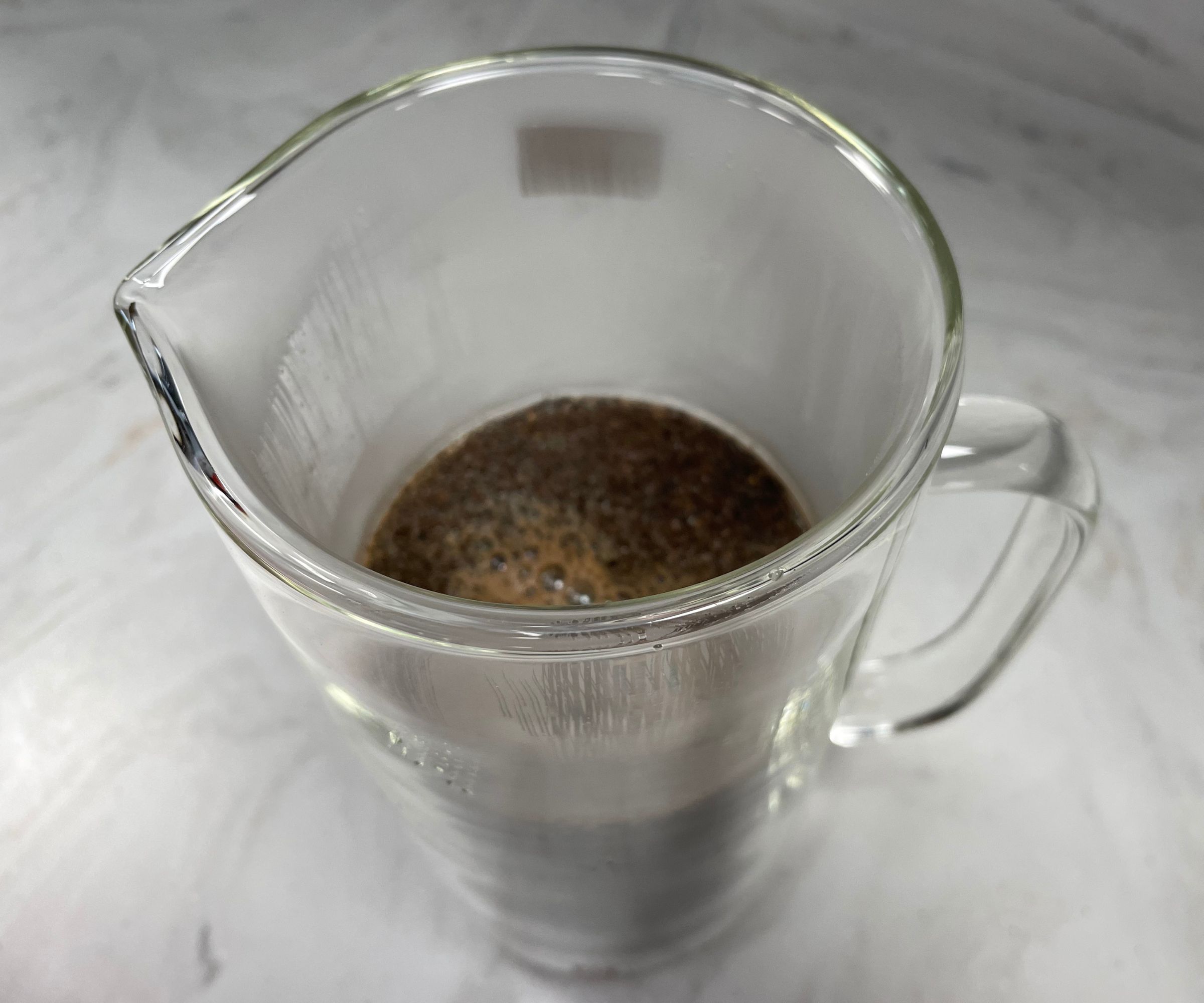
There's a little less literature to read through online, because Zwilling isn't in huge demand amongst coffee enthusiasts. However, I've scrolled through customer reviews on both Zwilling's and third party sites and can confirm that those who buy it don't regret it.
I was struck by just how many people take pictures of their Zwillings to add to their reviews. It's clearly the subject of a lot of pride and with good reason, too. It's beautiful and the clean, minimalist lines of the design make it a good addition to any kitchen.
People commented on the insulation, which impressed plenty of customers with its longevity. Although I wondered whether the size would be limiting, a number of reviewers treated this as a special product feature, taking theirs with them on holidays and into the office.
Whilst reviews unanimously praised the appearance and insulation of the Zwilling, they also united in criticism of the spout. It's very shallow with a steep curve, so a considerable number of people struggled with some dribbling.
How does it compare?
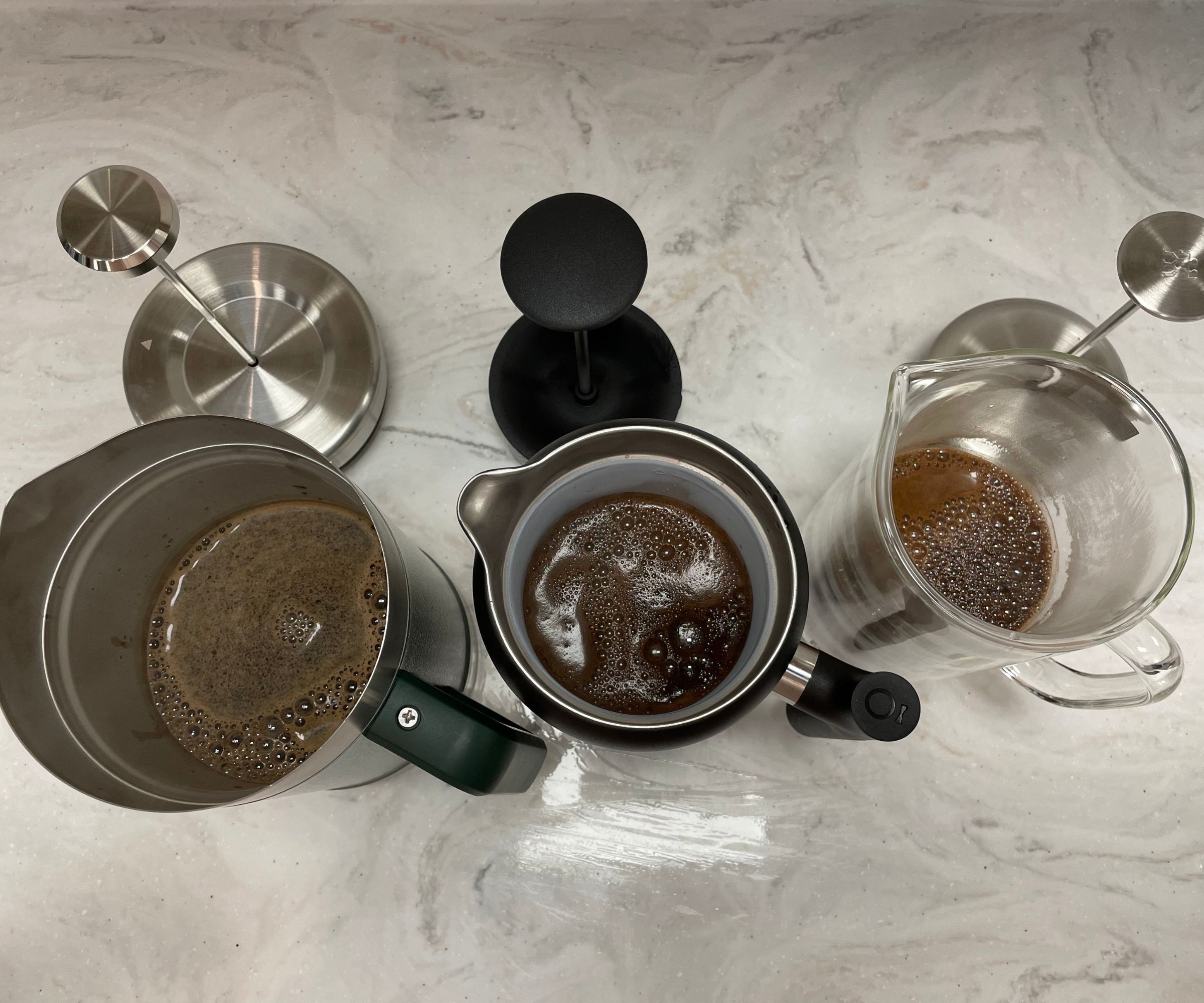
If the insulating feature is what drew you to the Zwilling, I'd recommend taking a look at the Espro P7 (available at Walmart) and Fellow Clara (available at Nordstrom) French presses. Both of these are double walled, also putting insulation at the forefront of their design.
I tested the Fellow Clara alongside the Zwilling, so it's easy to make direct comparisons. The Clara felt more durable than the Zwilling, mostly because it's made from stainless steel. The finish on the Clara was still sleek, but it takes a fair few more steps away from the classic, glass French press style.
Heat wise, the Clara was a better insulator. Whilst my Zwilling maintained a good temperature for an hour, the Clara could keep up the steamy temperatures for nearly three hours. If you often forget about your coffee and want to come back to it, the Clara is a better bet. It also boasts a bigger capacity and the lining has some etched guidelines for free-pouring grounds and water into the carafe, making it convenient and easy to use.
Whilst the Clara might sound like a better option, it's also twice, if not three times the price of the Zwilling. Even though I loved the Clara, it's hard to justify spending so much more for a few more hours of heat when the Zwilling does a great job anyway.
If you like the idea of watching your coffee brew, you seriously need to consider the Bodum Chambord French press. This has a more traditional style and, whilst it won't keep your coffee warm for hours, it available in a range of sizes, so you can pick the perfect one for your home. Bodum's French presses are available as a 51 oz model (available at QVC), perfect for large homes. However, if you want single-servings, there's also a 12 cup carafe (also available at QVC). The maximum capacity for the Zwilling is 27 ounces, no more, no less, so unless that suits you, there's very little room for movement. Opting for the Bodum will mean you compromise on style and insulation, but you'll have a better pouring experience too.
Should you buy it?
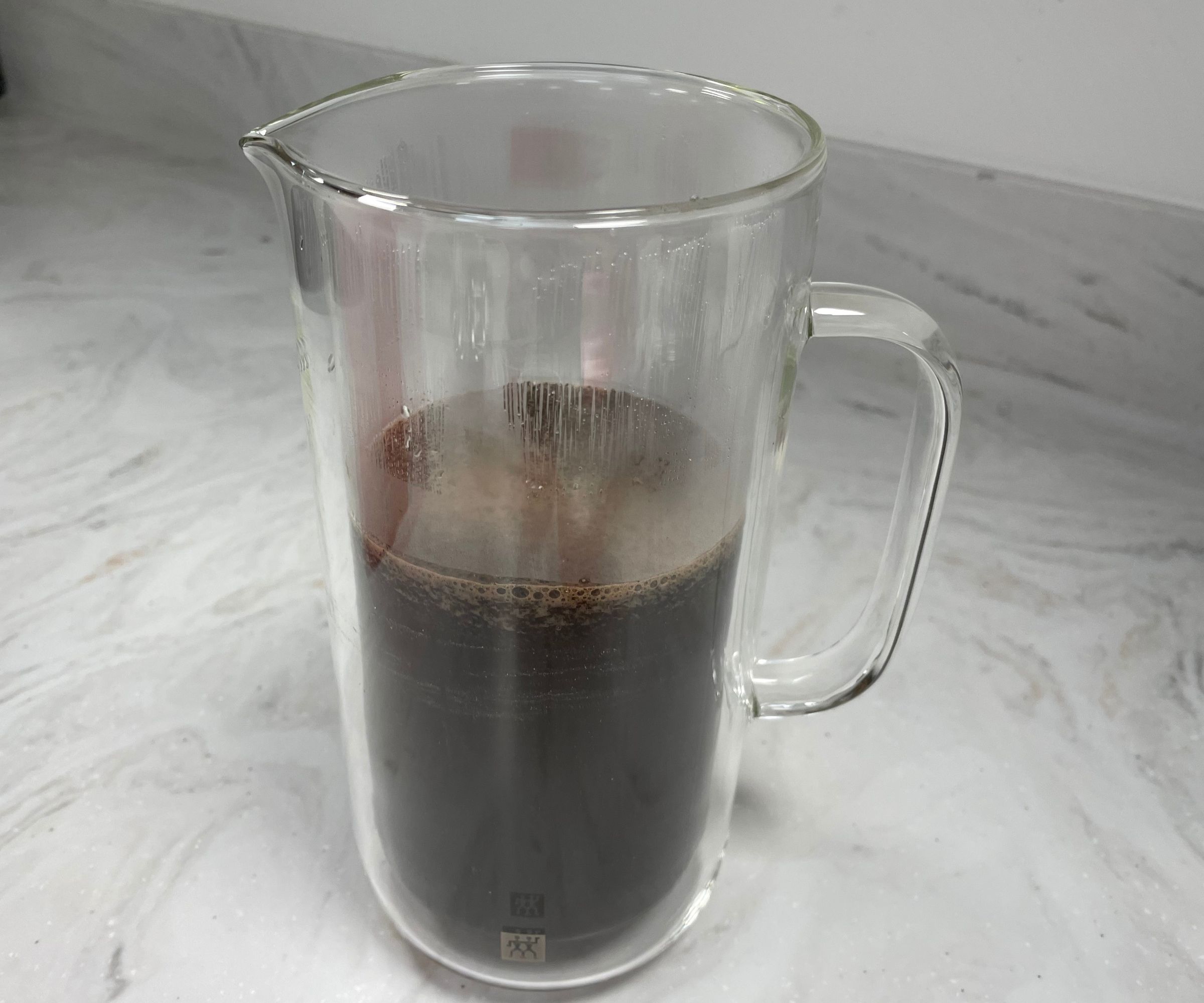
If you want a well-insulated, modern, minimalistic French press, this is a good option. It's actually hard to fault, aside from the dripping, which you can remedy with a confident pour. However, if you want to play it safe (and you're not bothered by insulation), it's worth having a browse of Bodum's range of French presses.
How we test
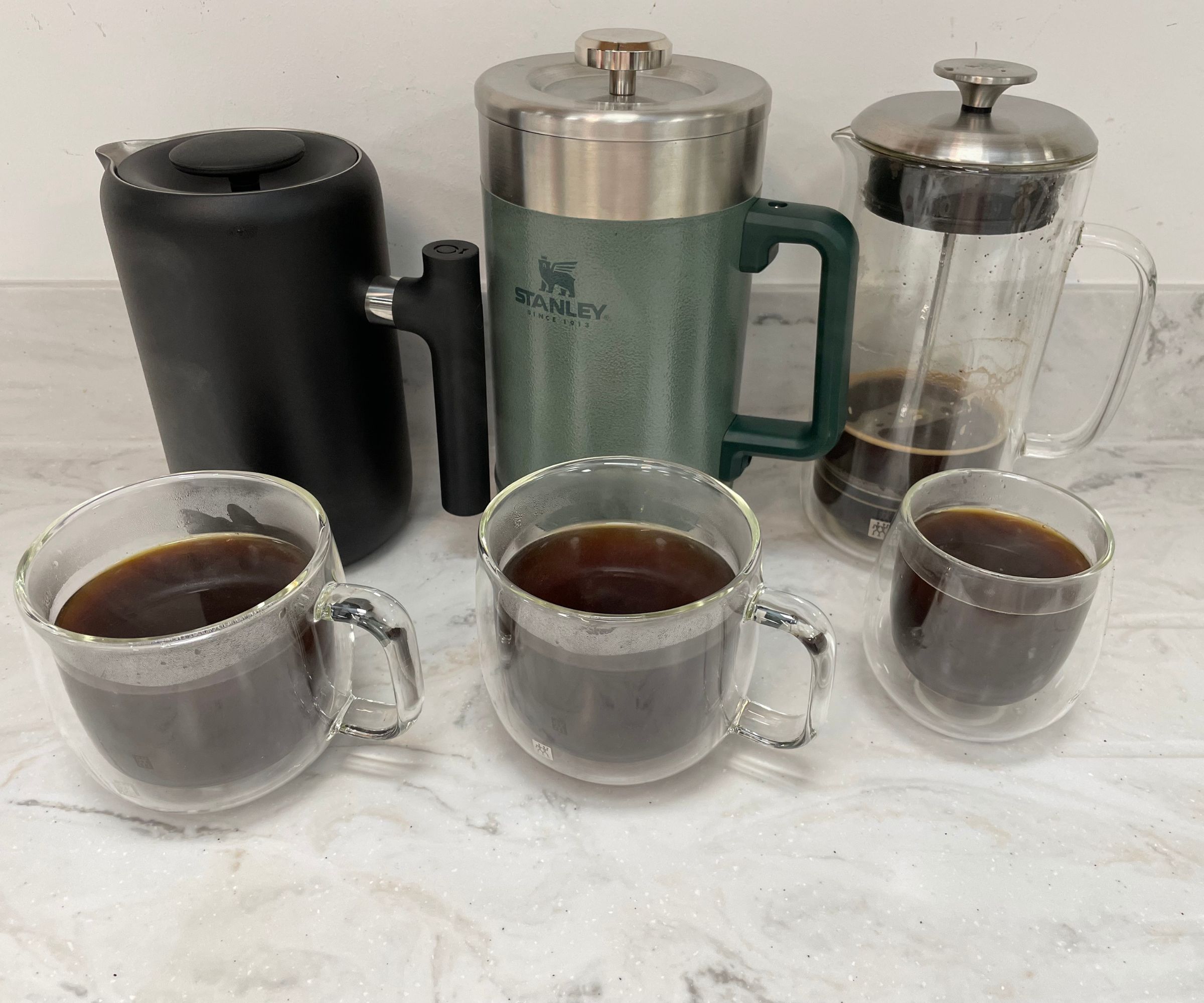
At Homes & Gardens we pride ourselves on our unsponsored, in-person testing process. We have a team of expert testers who are dedicated to reviewing products. They take every French press we recommend to our test kitchen where they use it to brew everything from a single cup to a cull carafe of French press coffee.
We always work on the standard one part coffee to twelve parts water ratio, unless a brand specifically asks us not to. We use the same coffee, ground coarsely, so that each French press has a fair chance of making a flavorful cup.
We'll take a measure of the temperature (ideally it will be around 200 degrees), as well as how much coffee we make. Most importantly, we'll let you know about the taste and texture of the coffee. It should be smooth to drink, with rich, bold, slightly acidic flavors. We keep a special eye on coffee grounds, which, whilst not a disaster, indicate that the filtration isn't up to certain standards.
Once we've done our taste tests, we wash up and try different storage options for each French press. That way, we'll find out which kitchens it might be too tall, too wide, or too unsightly for. We'll also pick up on how easy the filter is to disassemble and whether the components are dishwasher safe. These are all things which it's great to know, especially before you buy a French press.
If you're interested in finding out more, you can visit our dedicated page for how we test coffee makers.







